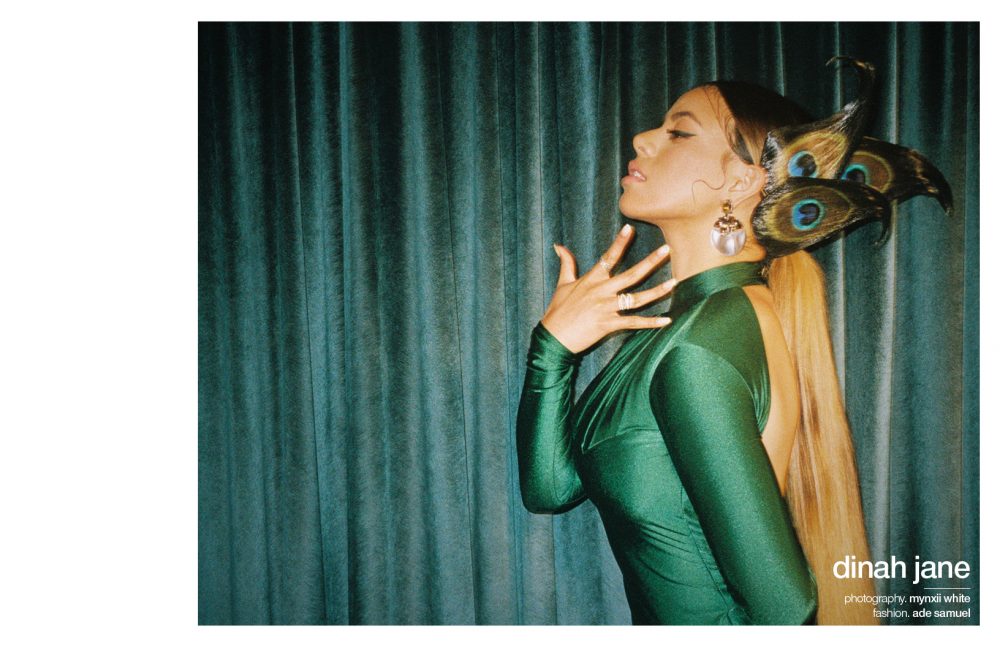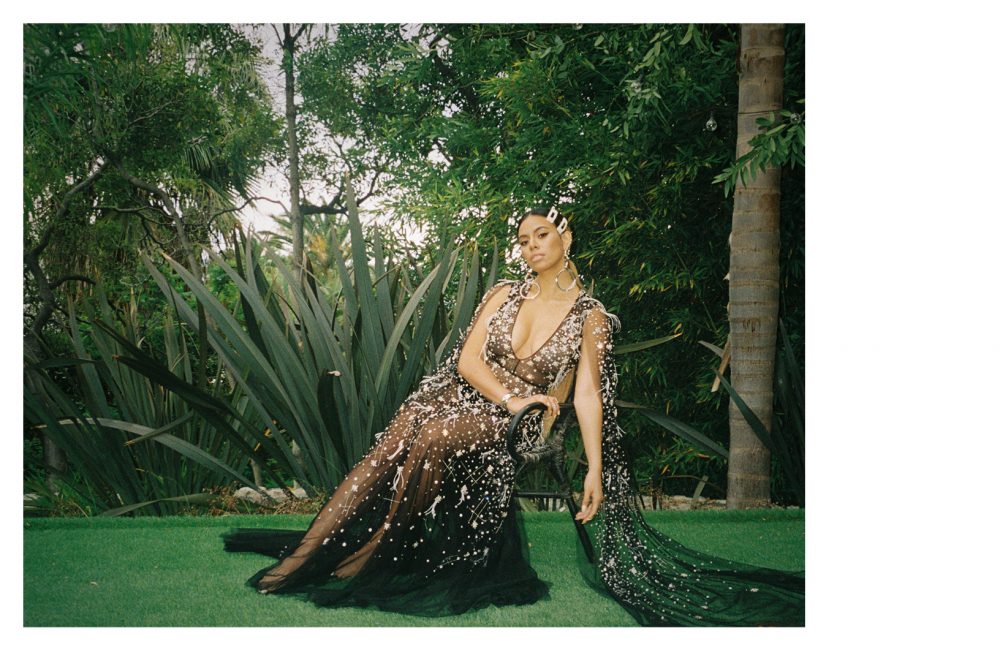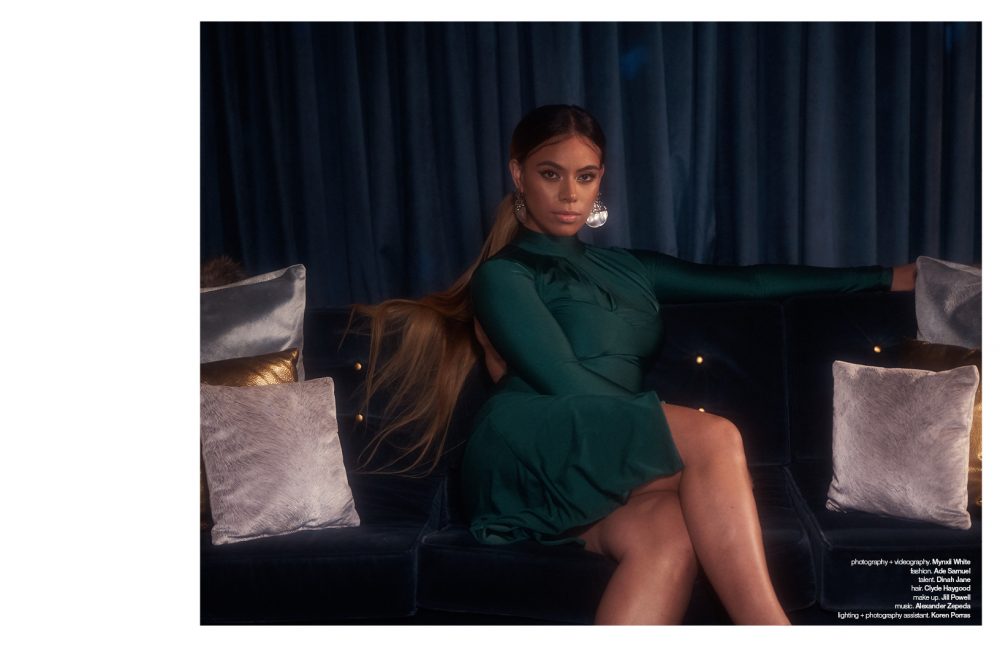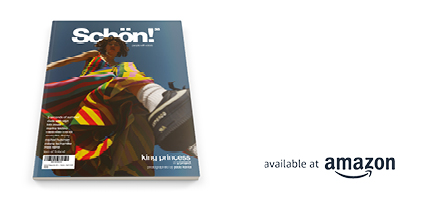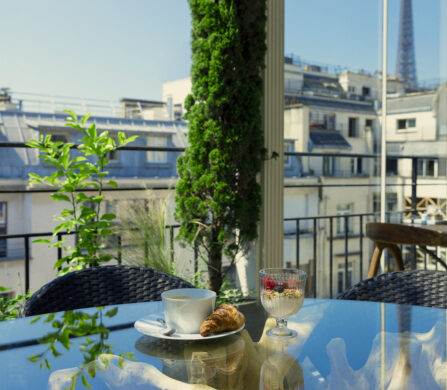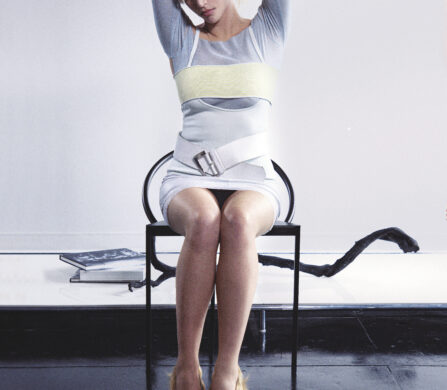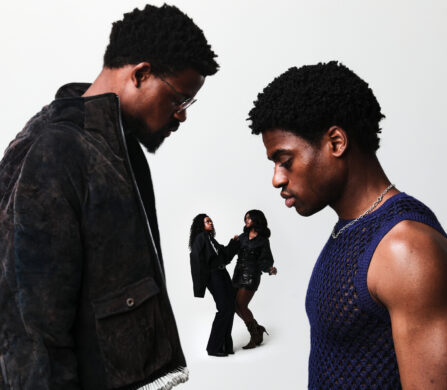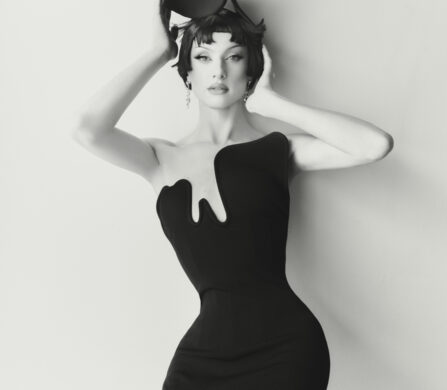At the mere age of 22 superstar Dinah Jane has acquired a glowing career most musicians could only dream of. Formerly part of girl band Fifth Harmony, formed on The X Factor, she’s won countless awards, received over a billion streams from a loyal fan base and toured the world.
Since the group’s 2018 hiatus Dinah is at an exciting new chapter in her life. She’s finding her own sound and going solo. She’s brewing with passion and has an impressive amount of vocal and lyrical skill to match. Her new tracks are radio-ready featuring classic R&B vocals reminiscent of Ariana Grande’s early sound with modern Mariah influences. Her voice is soothing and melodic yet powerful and her stage presence is alluring. Dinah says her progression from pop to soulful R&B has made her feel more authentic than ever.
With all the makings of a star and world-class experience since the age of 15, Dinah is on the verge of taking off. Here, the songstress opens up to Schön! on how her hard work and hustle got her to where she is today, how her Polynesian background nurtured her musicality, and how her experience in one of the most successful girl bands of the decade taught her humility.
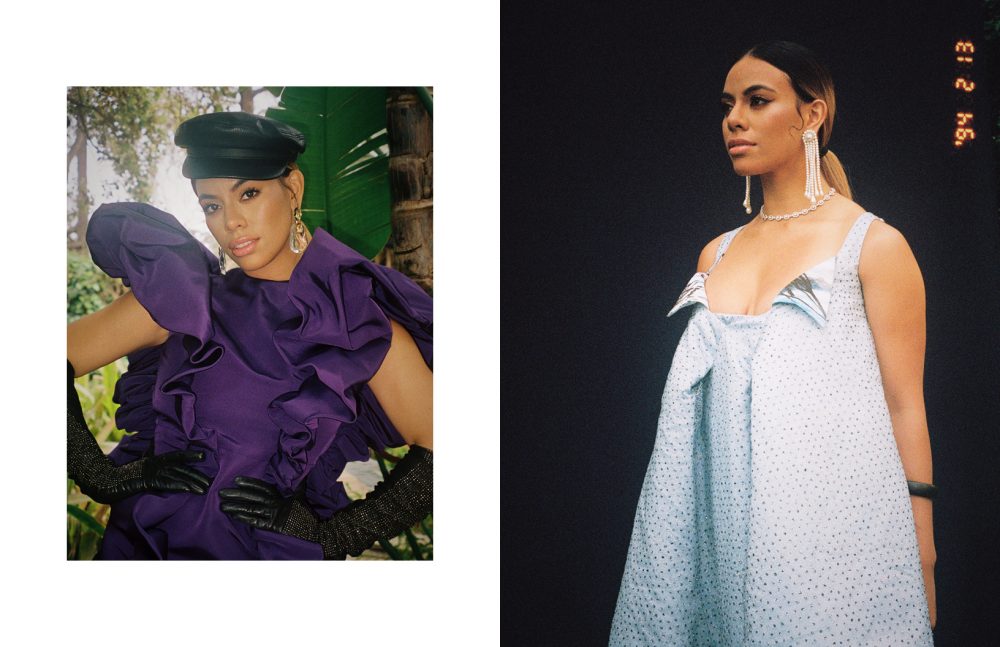
dress. Christian Siriano
earrings. Alexis Bittar
gloves + hat. Stylist’s own
opposite
dress. Edda Gimnes
earrings. Carolee
cuff. Alexis Bittar
necklace. Stylist’s own
Where did you grow up and what was it like?
I was born and raised in Santa Ana, CA. I lived in an untraditional American home with the capacity of 24+ family members under one roof. It may sound rare to y’all but this is the life of Polynesian families. We loved every moment we could possibly share with my grandparents. We take “family over everything” to the T!
Financially we had each other to lean on and support. It was never “every man for themselves.” When I say there was never a dull moment, there was never a dull moment. Us grandkids would put together a show by the end of the night to perform for our grandparents. We not only enjoyed entertaining them but getting faka pale — meaning they would give us a few bucks for making them laugh and any talent we felt like sharing that night. We were hustlers. Let’s not forget how the cops knocked on our front door four times in a row warning us to keep it down. The neighbours were filing complaints about how loud we were! Let’s face it, they were jealous that they never got an invite.
What was the soundtrack to your childhood?
Beres Hammond – They Gonna Talk & Rockaway. My dad is a huge reggae lover so he would have a whole burned CD playlist of his favourite artists. There was a time when I was four-years-old and I remember riding in this blue old-school Jeep with my parents ready for a new beginning in Rosepark, Utah. I’d peep outside of my window as Beres Hammond would play.
Has your Tongan heritage influenced your creative side at all?
Oh, yes! Immensely! Tongans love, love, love to harmonize. At an early age, I learned harmonies with my family and at church. So anytime I’m laying down melodies to a record, there’s always an urgency of adding some.
Do you come from a musical family?
Both of my parents are athletes and it just so happens my mom is a singer as well. All my life I would watch her perform at church and at some Polynesian concerts with her cousins. My dad tries to take credit as well because he thinks honours choir in 5th grade validated he’s a singer. I grew up listening to my mom and her brothers singing in our home. I noticed that no matter the issues we dealt with music was what saved our relationship. It brought unity and light into our home. My uncle can play just about anything! So talented! If I could have him accompany me at every performance I would.
When did you start singing?
From what I remember around four-years-old. A lot of my favourite childhood memories came from this time period and fun fact — it’s always been my lucky number! Crazy right?
What inspired you to start songwriting?
My mum inspired me to start songwriting. She wrote a few of her own songs around the house in front of me. I love this one song she wrote specifically for my grandpa. After witnessing that moment it instantly sparked inspiration in me. I thought “oh you make it look so easy writing from the heart mum.”
You call yourself a shy girl. How did you build the courage to show your talent to people?
It took time. It was not something overnight. Lots and lots of practice and nerves had to be shaken off. I [hated] when my mum would take me with her to the nail salon. She would put me on the spot at 7-years-old and be like “my daughter is a singer. Go, Dinah, go. Practice now!”
Did you always know you wanted to pursue music?
Yes. My parents would ask me “what do you want to be when you grow up? A teacher? A nurse?” I had such a passion for it at a young age. I set my mind to it. It is the best way I can communicate how I am feeling and what I am going through.
What made you decide to audition for The X Factor?
There were so many reasons! One of them was having Simon Cowell’s honest opinion. I was a huge fan of American Idol. I just had to know if I was good enough.
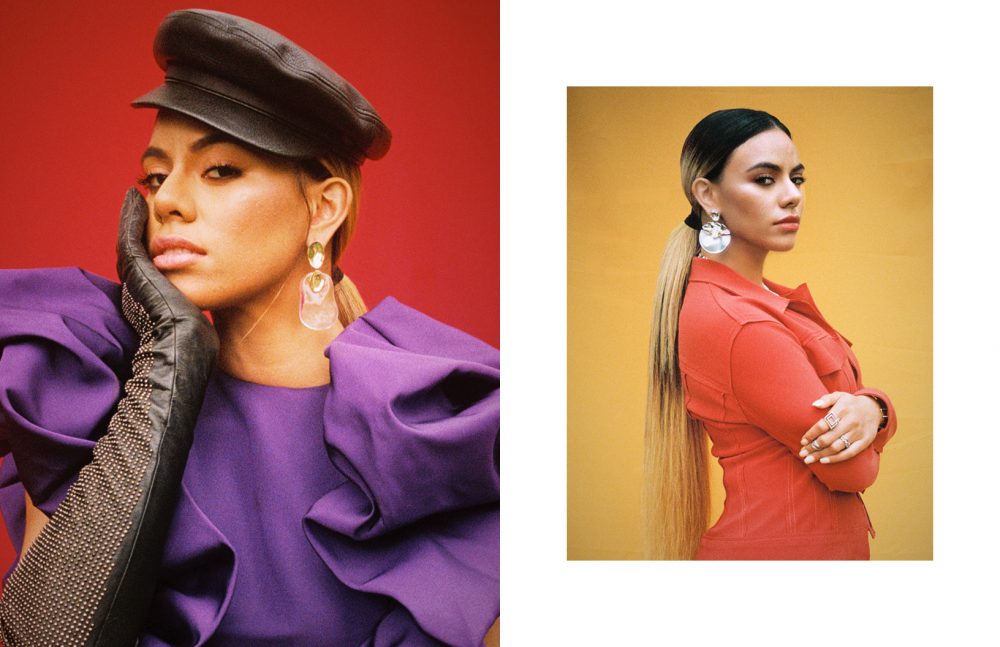
dress. Christian Siriano
earrings. Alexis Bittar
gloves + hat. Stylist’s own
opposite
jacket + jumpsuit. Norma Kamali
earrings. Alexis Bittar
necklace. Unode50
cuff. Jennifer Fisher
rings. Stylist’s own
How did your life change once the band took off?
I had to mature quickly at 15-years-old. Life was coming at all of us at 100 miles per hour. It was overwhelming at first having the world watch, learn, know what you are up to, and know all about you!
What’s the greatest lesson you learned about yourself from being in Fifth Harmony?
That no matter the success, remain humble. It’s easy to get caught up in the hype of being a “superstar.” No matter your credibility or status, don’t get lost or forget where you came from. I come from a humble beginning. Be kind and treat people with respect.
How has growing up in the spotlight affected you?
I feel and care too much about others thoughts and opinions. So me stepping into the spotlight at 15, I was self-conscious about my appearance. I looked different from the girls in my group. I was taller, thick-boned, and imperfect. Social media is what planted a seed of insecurity in my head. I was constantly comparing myself to the other [girls]. It wasn’t until we had meet-and-greets at concerts, that I saw myself in some of these beautiful girls. I was reminded that I am not alone and that we are uniquely perfect.
As a successful pop star, you become a role model to millions. That’s a lot of pressure! How do you find self-confidence after being under public scrutiny from so young?
Being the oldest grandchild of 18 at the time and the oldest in my immediate family of 8, the pressure was already there! My culture also played a heavy role in my life. The first born is like the “face” of the family. I had to set the bar high, be that role model and example of “hard work pays off when you grind for it.” There was never room to make a mistake. So pressure doesn’t affect me. But all I know is I am human and I will make mistakes. You can never expect perfection from people.
Who has been a key mentor in your journey so far?
Number one is my parents. They keep me grounded and constantly remind me why I am here, how I got here, what I am here for, and who put me in this position — God. My foundation is solid. I thank God for them every day.
For all the women dreaming of doing what you do, what is the key to making a mark in this industry?
Being yourself. Because no pinnacle of success can compensate for losing your values. I had a time in my life where I contemplated on being someone the industry wanted me to be but I had to choose myself in the end.
What do you do in your free time to zone out?
Adventure! I love a good time. It makes me realize that outside of work, there is so much more out there. No matter how bad my day is, outside of this building there is life!
Do you have a hobby or guilty pleasure people don’t know about?
I love outdoor sports! I don’t care what sport it is! That is my way of being active. My guilty pleasure is journaling. It is truly my therapy.
How would you describe your new body of work?
It is authentic. I was afraid of releasing this project at first because it didn’t sound like anything else on the radio or on streaming services. My music is soul/urban. It screams “Dinah Jane.”
Was it hard to find your own sound once you went solo?
It was challenging I must say. Being that I was in a girl group for seven years I was exposed to so many different genres. I was confused and unsure of where I stood as an individual. I always knew R&B was it but during this journey of being a new artist, I would unintentionally fall into the super pop sound without knowing I was. My core style of music stems from both my parents. I am so sure of what I am doing now. It just feels right.
What message do you want fans to take from your new music?
Soul, passion, a good time, and love. I am just as human as y’all are. I am not perfect but I find music as my escape from reality. I enjoy writing real-life events that have happened to me and include it into my music because that is the best way I can express myself.
Lastly, what’s next for you?
A lot of exciting things are about to happen! I cannot say it yet but there is more to come. I will say that this Schön! photoshoot was one of my favourite shoots from the hair and makeup, down to the styling of the clothes. Check it out!
Dinah Jane’s 3-song bundle, ‘Dinah Jane 1‘, is out now. Listen to the first single, ‘Heard It All Before’ here.
This Schön! online exclusive has been produced by
photography + videography. Mynxii White
fashion. Ade Samuel
talent. Dinah Jane
hair. Clyde Haygood
make up. Jill Powell
music. Alexander Zepeda
lighting + photography assistant. Koren Porras
words. Shama Nasinde
Schön! Magazine is now available in print at Amazon,
as ebook download + on any mobile device












